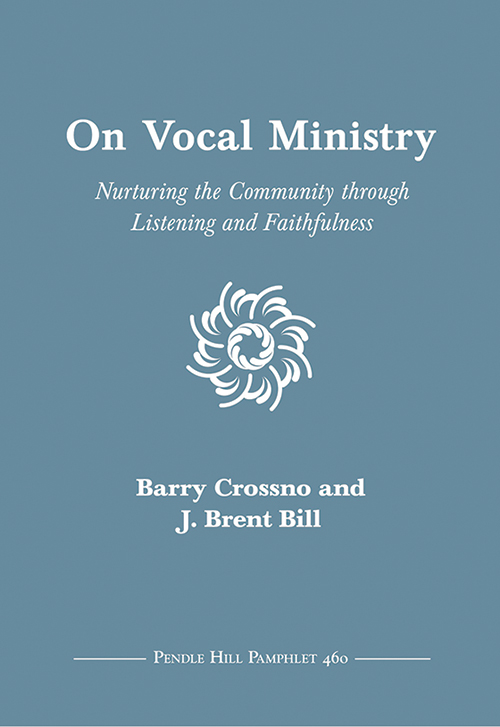
On Vocal Ministry: Nurturing the Community through Listening and Faithfulness
Reviewed by Marty Grundy
August 1, 2020
By Barry Crossno and J. Brent Bill. Pendle Hill Pamphlets (number 460), 2019. 34 pages. $7/pamphlet.
This excellent pamphlet should be made widely available to folks who attend meetings that have silent waiting worship. It describes worship, and the importance of vocal ministry. Then it moves on to define speaking that is ministry or is not ministry: what is the difference for both listener and speaker. Finally, it concludes with suggestions for members of Ministry and Counsel Committees (or the equivalent) on how to deal with disruptive speaking and speakers.
Meeting for worship—the heart of Quaker faith and practice—is not just personal. It is very much a communal exercise. While we each bring our individual issues and the “Spirit comes to heal, help, rejoice, and care for us,” we are reminded that “Worship is also about the care of the communal body we are part of and that the Spirit is enveloping.” We are in this together.
Speaking that is vital ministry and not just talking takes “the community of faith deeper into what is helpful, loving, challenging, and timeless.” The authors identify vocal ministry as a spiritual practice: something that has a body of knowledge and experience that can guide our practice. The oft-reproduced 1997 diagram of when to speak in meeting has been updated and included in the pamphlet. Each of the steps is then clearly described, including a helpful piece on the discernment of prophetic speech versus partisan political speech—something that may be increasingly important in these times.
There is also mention of what is too often ignored: that each meeting has its own culture around vocal ministry. It would be helpful for old-timers, as well as for visitors to the meeting, to examine and articulate expectations around vocal ministry. The goal is to become clear pipes for the living water, so that our souls are refreshed and we are given strength for living faithfully in these challenging times.
The final section deals with the knotty problem of how to deal with speaking that goes beyond the superficial and is harmful or disruptive. This is for members of the Ministry and Counsel Committee (or its equivalent), and they are encouraged to read and discuss this pamphlet so as to be ready should the need arise. The authors posit a range of unhelpful speaking, and a range of possible responses. One size does not fit all. The underlying motivation is love: for the speaker, for the ones hurt, and for the health and well-being of the meeting itself. The idea is not to call out the blundering speakers but to try to call them in. A number of helpful scenarios are offered in how to address the listeners who were upset, the speaker who was admonished, and the members of Ministry and Counsel who intervened.
This pamphlet is a good companion to Steven Davison’s The Gathered Meeting (Pendle Hill Pamphlets, number 444). The two could be read and discussed consecutively as a way to deepen and strengthen our faith communities.
Marty Grundy is a member of Wellesley (Mass.) Meeting, New England Yearly Meeting.


